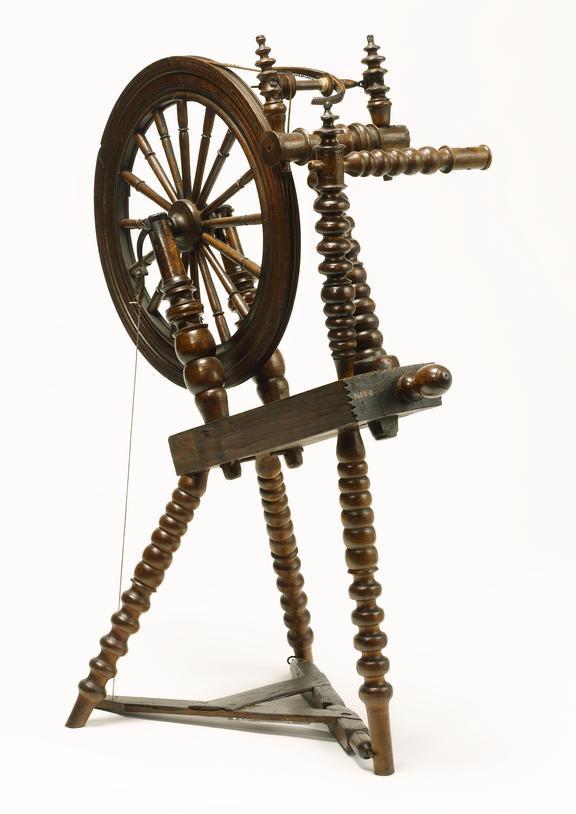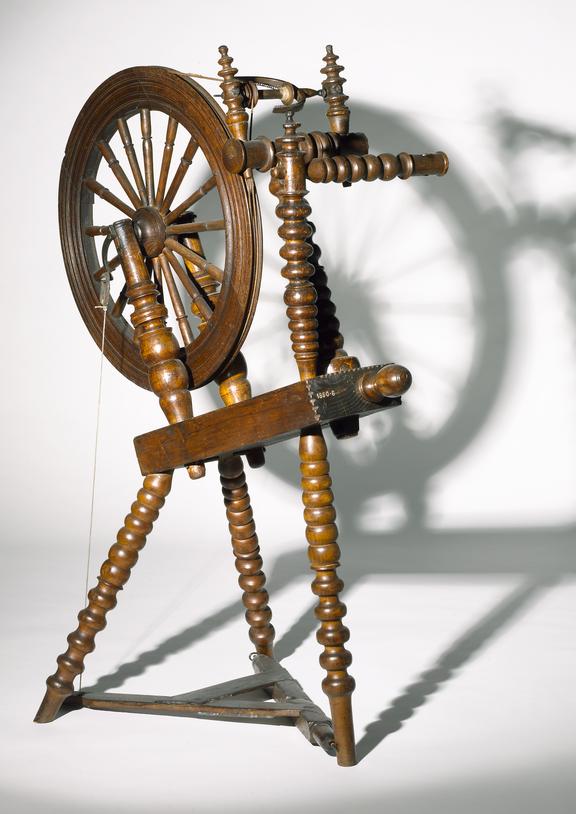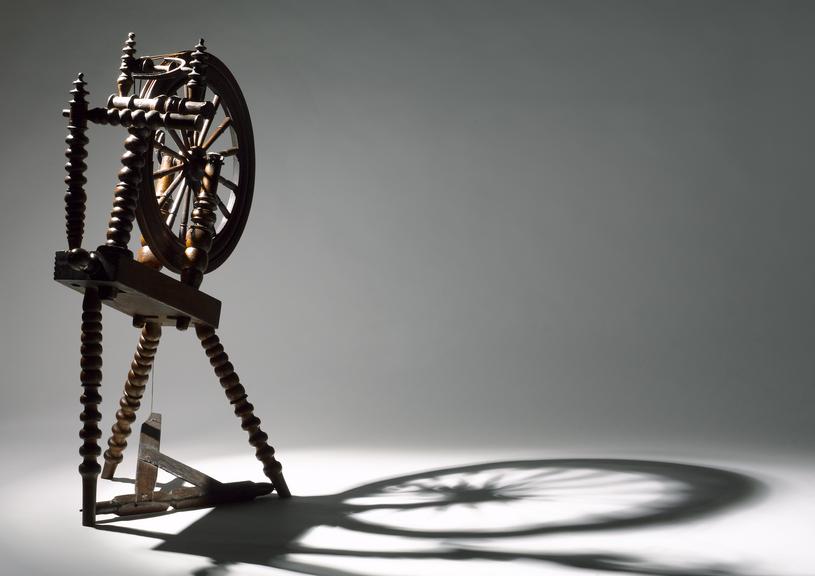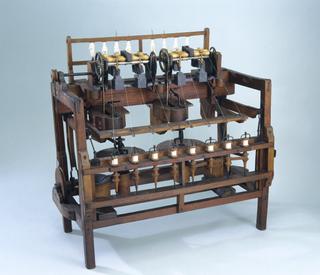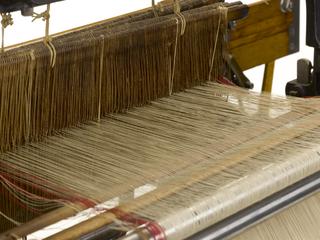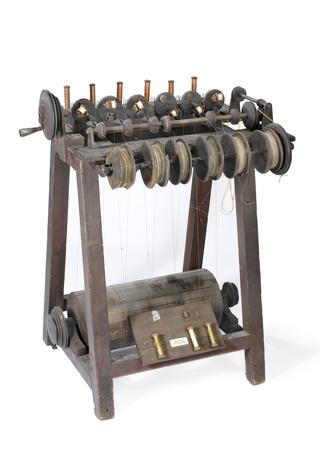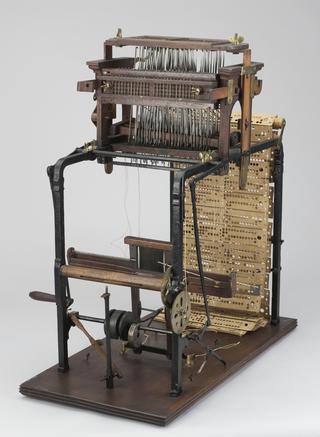Spinning Wheel believed to have belonged to Richard Arkwright (1732-1792). With engraving, by unknown maker.
This is an example of a hand spinning wheel, once the property of Sir Richard Arkwright, as used at the time when Hargreaves's spinning jenny and Arkwright's water frame for making cotton thread were first introduced. The fibrous material was held in the creel, drawn from there by hand, and worked up into a thread. This was led through the hollow axis of the flier, over one of the hooks, or hecks, on the flier, and wound upon the bobbin, which was loose upon the flier spindle. There were two bands from a double-grooved fly- wheel, driven by a treadle and a crank, to two small pulleys of slightly different sizes, one fixed to the flier spindle, the other to the bobbin. The rotation of the flier put twist into the thread, and the difference between the speeds of the flier and bobbin caused the thread to be wound upon the latter. Very fine yarns could be spun with these wheels, as fine as any which can be made with the machinery of the present day, but a great deal depended upon the skill of the spinner, and the output was very small. Cotton spun by such wheels had not sufficient strength for general use as warp thread, so that warps were usually spun from flax, but Arkwright's machinery, by the greater twisting and consequent strength that it gave to the thread, rendered the use of cotton general for both warp and weft.



